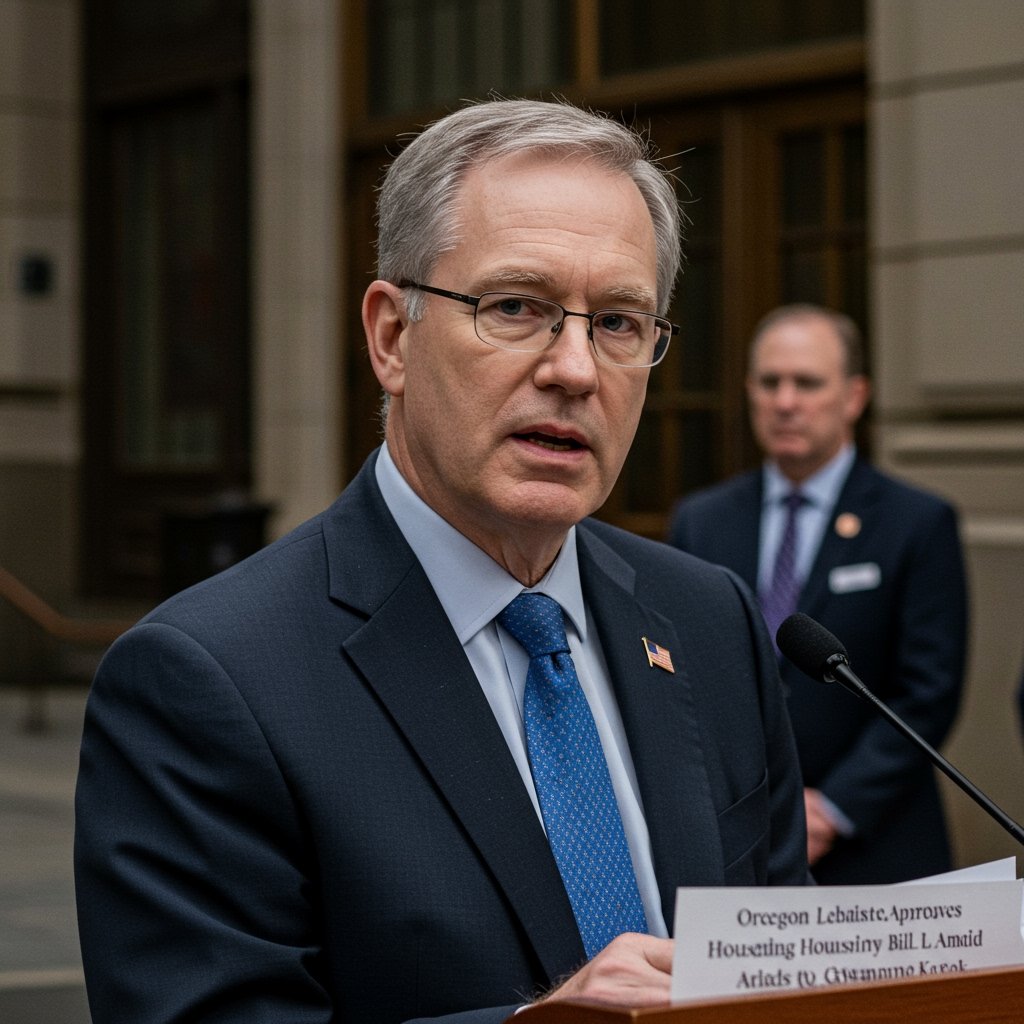Oregon Legislature Passes Landmark Housing Density Bill Amid Intense Debate
The Oregon Legislature has successfully passed Senate Bill 1001, a significant and highly controversial piece of legislation aimed at fundamentally altering the state’s approach to housing development. The bill, which mandates increased housing density across much of Oregon, has now been sent to the desk of Governor Tina Kotek for her signature, marking a critical step in the state’s ongoing effort to address a severe and worsening housing affordability crisis.
At the heart of SB 1001 is a requirement for cities exceeding 10,000 residents to allow for the construction of duplexes and triplexes within areas traditionally zoned exclusively for single-family homes. This marks a substantial departure from decades of conventional zoning practices and represents one of the most ambitious state-level efforts in the nation to eliminate exclusionary single-family zoning.
Proponents Hail SB 1001 as a Crucial Step Towards Affordability
Supporters of SB 1001, including a broad coalition of housing advocates, developers, and urban planning experts, have lauded its passage as a necessary and transformative action. They argue that restrictive single-family zoning has contributed significantly to Oregon’s housing shortage by limiting the supply of diverse housing types, driving up costs, and exacerbating inequality. By allowing for denser housing options like duplexes and triplexes in more areas, the bill is expected to incrementally increase the housing supply over time, offering more affordable choices for individuals and families.
Advocates contend that simply building more single-family homes on increasingly expensive land is unsustainable and inaccessible for many Oregonians. They see SB 1001 as a way to allow for gentle density that integrates seamlessly into existing neighborhoods while making homeownership or rental housing more attainable for working families, young professionals, and seniors.
Opposition Raises Concerns Over Infrastructure and Character
Despite the urgency expressed by proponents, SB 1001 has faced strong opposition, particularly from some local governments and neighborhood groups. Critics voice significant concerns regarding the potential strain on existing infrastructure. They argue that increased density without corresponding investments in water systems, sewer lines, roads, public transit, and schools could overwhelm municipal services, leading to decreased quality of life and unplanned financial burdens on cities.
Another major point of contention centers on the potential impact on neighborhood character. Opponents express fears that allowing multi-unit buildings in historically single-family areas will fundamentally alter the aesthetic and social fabric of communities. They worry about issues such as increased traffic, reduced on-street parking, and changes to lot coverage and green space. Local officials have also raised questions about the state preempting local control over land-use decisions, arguing that land-use planning is best handled at the municipal level to reflect local needs and priorities.
The Heated Debate Reflects Deep Divisions
The legislative journey of SB 1001 was marked by heated debate and intense lobbying from both sides. Discussions in legislative committees and on the chamber floors revealed deep divisions over the root causes of the housing crisis and the most effective solutions. While proponents emphasized the need for bold, systemic change to address supply-side issues, opponents highlighted the importance of planned growth, infrastructure investment, and local autonomy.
The editorial commentary across the state has mirrored this division, with newspapers and media outlets offering sharply conflicting perspectives on SB 1001’s potential impacts. Some editorials have championed the bill as a courageous and necessary step to combat sprawl and make housing more accessible, while others have criticized it as an overreach that fails to adequately plan for infrastructure needs and disregards local concerns. The intense public discussion surrounding the legislation underscores the complex and multifaceted nature of Oregon’s housing challenges.
Looking Ahead: Implementation and Impact
With SB 1001 now awaiting Governor Kotek’s signature, attention is shifting towards the practicalities of implementation. If signed into law, cities will face the task of updating their zoning codes and land-use regulations to comply with the new state mandate. This process is likely to involve detailed planning, public hearings, and potential administrative challenges.
The long-term impacts of SB 1001 remain a subject of speculation and debate. Proponents anticipate a gradual increase in housing supply and a stabilization or moderation of housing costs in targeted areas. Opponents remain concerned about unintended consequences related to infrastructure, neighborhood stability, and potential development pressures. The success and effectiveness of the bill will ultimately depend on careful implementation, complementary investments in infrastructure, and ongoing monitoring of its effects on housing markets and communities across Oregon. The journey of SB 1001 from legislative proposal to potential law reflects the significant political will and public discourse surrounding the urgent need to find solutions for Oregon’s pressing housing affordability crisis.



